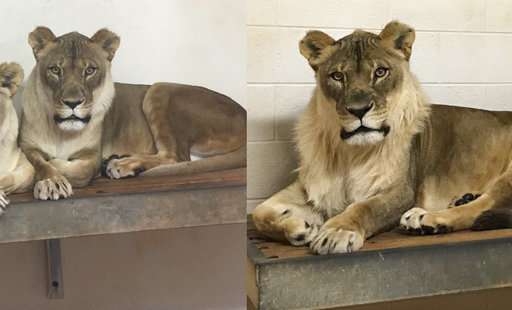These photos provided by the Oklahoma City Zoo taken, March 25, 2017, left, and Nov. 23, 2017, right, show Bridget, a lioness that has grown a mane. The zoo says a blood sample has detected the reason why one of its African lionesses has grown a mane. The zoo says in its March newsletter that testing at the University of Tennessee veterinary school lab found that the lioness Bridget an elevated level of androstenedione, a hormone that can contribute to developing traits and features of a male. The blood was compared to a sample from the animal's sister, which has no mane.(Amanda Sorenson/Oklahoma City Zoo via AP)
Lab results have revealed the answer to a mystery at an Oklahoma zoo: Just what caused a female lion to sprout a mane.
The Oklahoma City Zoo says in its March newsletter that testing at the University of Tennessee found the African lioness named Bridget has an elevated level of androstenedione, a hormone that can contribute to developing male features.
Veterinarians compared Bridget's blood to samples from her sister, who has no mane. Bridget's blood also contained a higher level of cortisol, which regulates metabolism and the immune system.
The zoo says the results likely mean the 18-year-old lioness has a benign tumor that's producing the hormones, but that her health is excellent.
The zoo says female lions with manes are not unheard of, but they are rare.
© 2018 The Associated Press. All rights reserved.





















